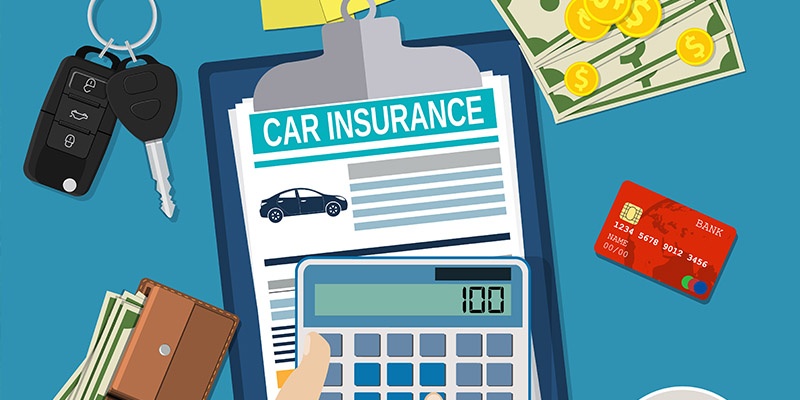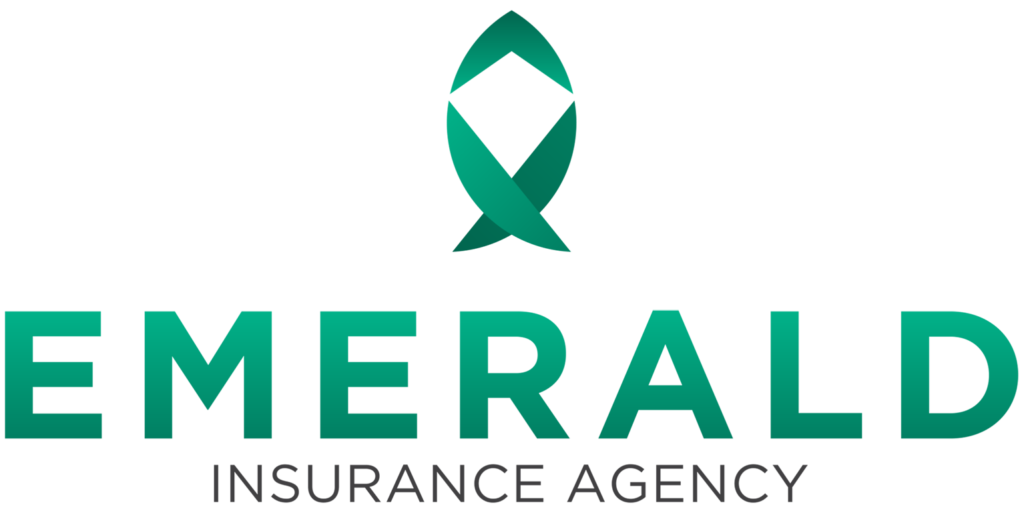15 Tips and Ideas for Cutting Car Insurance Costs
 Due to the litigious nature of our society and the rising costs of vehicles, car insurance rates are on the rise across the country. The bad news is insurance isn’t likely to come down in price any time soon.
Due to the litigious nature of our society and the rising costs of vehicles, car insurance rates are on the rise across the country. The bad news is insurance isn’t likely to come down in price any time soon.
The good news is there are things you can do to minimize increases and/or reduce the burden on your wallet.
1. Multiple Drivers May Save Money
If you obtain a quote from an auto insurance company to insure a single vehicle, you might end up with a higher quote per vehicle than if you inquired about insuring several drivers and/or vehicles with that company. Insurance companies will offer what amounts to a bulk rate because they want your business, and under some circumstances, they are willing to give you a deal if it means you’ll bring in more of it.
Ask your insurance agent to see if you qualify. Generally speaking, multiple drivers must live at the same residence and be related by blood or by marriage. Two non-related people may also be able to obtain a discount; however, they usually must jointly own the vehicle.
If one of your drivers is a teen, you can expect to pay more to insure them. But, if your child’s grades are a B average or above, you may be able to get a discount on their coverage. These discounts can range from 6% to 20%, so be sure to show proof to your insurance agent that your teen is a good student.
Incidentally, some companies may also provide an auto insurance discount if you maintain other policies with the firm (e.g. homeowner’s insurance). Check to see if such discounts are available and applicable.
2. Mindful Driving Cuts Costs
In other words, be a safe driver. This should go without saying, but in today’s age of increasing in-car distractions, this bears mentioning as much as possible. The more mindful you are, the more accidents or moving violations you’ll be able to avoid—events which raise our insurance rates. For those unaware, points are typically assessed to a driver for moving violations, and more points can lead to higher insurance premiums (all else being equal).
3. Take a Defensive Driving Course
Sometimes insurance companies will provide a discount for those who complete an approved defensive driving course. Drivers may also be able to reduce the number of points he or she has on his or her license by taking a defensive driving, accident prevention or other courses.
Make sure to directly ask your agent/insurance company about this discount before signing up for a class. After all, it’s important that the effort being expended and the cost of the course translates into a big enough insurance savings. It’s also important that the driver sign up for an accredited course.
4. Shop Around for Better Premiums
If your policy is about to renew and the annual premium has gone up markedly, consider shopping around and obtaining quotes from competing companies. Also, every year or two it probably makes sense to obtain quotes from other companies just in case there is a lower rate out there.
Remember, cheap doesn’t always mean good, and going with the lower-priced company isn’t always the wisest decision. That’s because the insurer’s creditworthiness should also be considered. After all, what good is a policy if the company doesn’t have the wherewithal to pay an insurance claim? To run a check on a particular insurer, consider checking out a site that rates the financial strength of insurance companies. The financial strength of your insurance company is important but, what your contract covers is also very important so, make sure you understand your insurance contract.
5. Use Mass Transit
When you sign up for insurance, the company will generally start with a questionnaire. Among the questions it asks might be the number of miles you drive the insured automobile per year.
If you use your vehicle to commute three hours to work every day, you will generally pay more in insurance premiums than someone who only drives one mile a day. If possible, try to use mass transit to rack up fewer miles, keeping in mind you will usually have to decrease your mileage significantly before incurring a discount. Ask your insurance company about the company’s different mileage thresholds so your efforts won’t be wasted.
6. Larger Cars Cost More
Buying a huge SUV may sound exciting, but insuring a 5,000-pound, top-of-the-line vehicle can be more expensive than insuring a small (but safe) lower-cost commuter car. Some insurers will offer a discount if you buy a hybrid or alternative fuel vehicle. You can feel good about protecting the environment and save money on insurance at the same time. Find out the exact rates to insure the different vehicles you’re considering before making a purchase.
7. Increase Your Deductibles
When selecting car insurance, you can typically choose a deductible or the amount of money you would have to pay before insurance picks up the tab in the event of an accident, theft or other types of damage to the vehicle. Depending on the policy, deductibles typically range from $250 to $1,000. The catch is, generally speaking, the lower the deductible, the higher the annual premium. Conversely, the higher the deductible, the lower the premium. Ask your agent how your premium might be affected if you raised your deductible. It may make the annual premium better by several percentage points and put some money back in your pocket, or the savings may be minimal.
8. Improve Your Credit Rating
A driver’s record is obviously a big factor in determining auto insurance costs. After all, it makes sense that a driver who has been in lots of accidents could cost the insurance company lots of money. However, folks are sometimes surprised to find that insurance companies may also consider credit ratings when determining insurance premiums.
Why is a person’s credit rating considered? “Many insurers use credit-based insurance scores,” says Michael Barry, senior vice president and head of media relations of the Insurance Information Institute. “It’s a contentious issue in certain statehouses… [but] insurers will say their studies show that if you’re responsible in your personal life, you’re less likely to file claims.” Regardless of whether that’s true, be aware that your credit rating can be a factor in figuring insurance premiums and do your utmost to keep your credit rating high.
9. Location May Increase Costs
It’s unlikely that you will move to a different state simply because it has lower car insurance rates. However, when planning a move, the potential change in your car insurance rate is something you will want to factor into your budget.
10. Review Comprehensive Coverage
Dropping certain types of coverage can be a slippery slope. After all, nobody can predict if or when an accident will occur. However, if an individual is driving an extremely old automobile that’s on its last legs, it may make sense (depending on the cost, the individual’s driving record and other factors) to drop collision or comprehensive coverage. The reason for this is were the vehicle to be involved in an accident, the insurance company would likely total the car. If the value of the car is only $1,000 and the collision coverage costs $500 per year, it may not make sense to buy it.
11. Discounts for Anti-Theft Device
Individuals have the potential to lower their annual premiums, sometimes by as much as several percents, if they install anti-theft devices. Your insurance company should be able to tell you specifically which devices when installed, can lower premiums. Car alarms and LoJacks are two types of devices you might want to inquire about. If your primary motivation for installing an anti-theft device is to lower your insurance premium, consider whether the cost of adding the device will result in a significant enough savings to be worth the trouble and expense.
12. Speak to Your Agent
It’s important to note there may be other potential cost savings to be had in addition to the ones described in this article. In fact, that’s why it often makes sense to ask if there are any special discounts the company offers for individuals such as military personnel or employees of a certain company. You never know what sort of discount pricing might be available for your circumstances.
13. Pay-As-You-Go Insurance
If you’re a safe, low-mileage driver, a usage-based insurance program may be available to you, such as SafeCo’s RightTrack or Progressive’s Snapshot. By signing up for these programs, you let your insurer track your driving in exchange for possible discounts, based on how much you drive, when you drive, and how well you drive. If you drive less than 10,000 miles a year, you might be able to save money with this type of program.
14. Research Additional Discounts
Insurers provide a variety of discounts. Check for discounts like these:
- Insurance bundles with other types of insurance, such as homeowners insurance
- Pay the entire annual or six-month premium at once
- Agree to receive e-bills and documentation
- Are you a member of particular organizations or groups that offer discounts? Don’t be swayed, however, by a long list of possible discounts. Compare both discount and regular prices from multiple insurers.
15. Coverage You May Not Need
You may not need all the bells and whistles in a policy, such as roadside assistance and car rental coverage. Go over your insurance policy line-by-line, and ask about removing any coverage that you don’t need.
The Bottom Line
The price of auto insurance is likely to continue to rise in the future. However, there are many things you can do to reduce the sting, and hopefully, these 15 tips will have you driving in the right direction.
